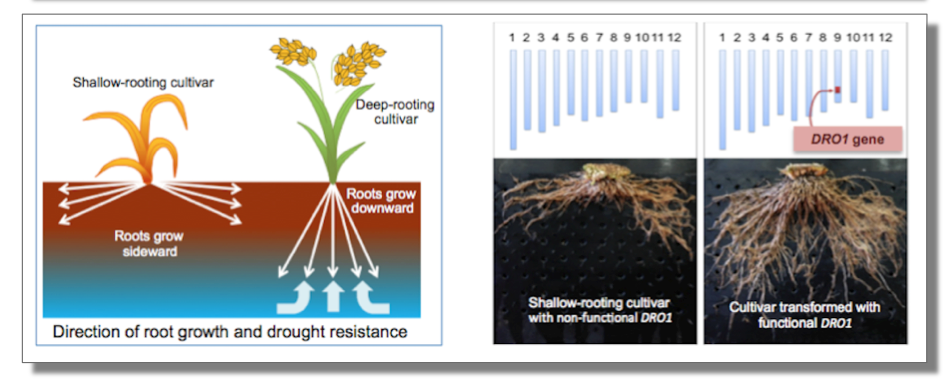Applications of the rice genome sequence information in crop improvement
The rice genome sequence is indispensable in breeding for improved and novel cultivars. With the completion of the rice genome sequence and development of genomics tools, research on agronomically important genes have greatly accelerated. Marker assisted selection has greatly promoted analysis of genes.
Towards improvement of Japanese rice cultivars
Rice blast disease caused by fungal infection is one of the most destructive disease that has caused considerable damage in rice production all over Japan. A gene that controls strong resistance to rice blast (pi21) has been identified in cultivar Okabo. However introducing the gene in commercial cultivars induces a poor eating quality in the recipient cultivar. Using the genome information, the positional relationship ofpi21 and eating quality in the chromosome has been clarified which led to the successful development of a rice strain with strong blast resistance and good eating quality.

Towards improvement of rice cultivars around the world
The gene which controls deep rooting in rice was successfully isolated by map-based cloning. When the gene (DRO1) was introduced in shallow rooting rice cultivar, the root system developed extensively penetrating deeply into the soil thereby allowing the plants to absorb more water. It is expected that utilization of this gene in breeding of various crops will lead to the development of cultivars with strong resistance against drought stress particularly in many Asian and African countries usually affected by severe drought during the dry season.

Towards development of innovative strategies for crop improvement
The expression profile of all the genes during various stages of growth and development under natural field conditions have been clarified by large-scale microarray analysis. The expressional dynamics was then analysed by statistical modeling that takes into account the age of the plant, the circadian rhythm, and environmental stimuli such as temperature, solar radiation etc. This strategy allows the prediction of how a particular genotype will behave under a pre-determined condition.

